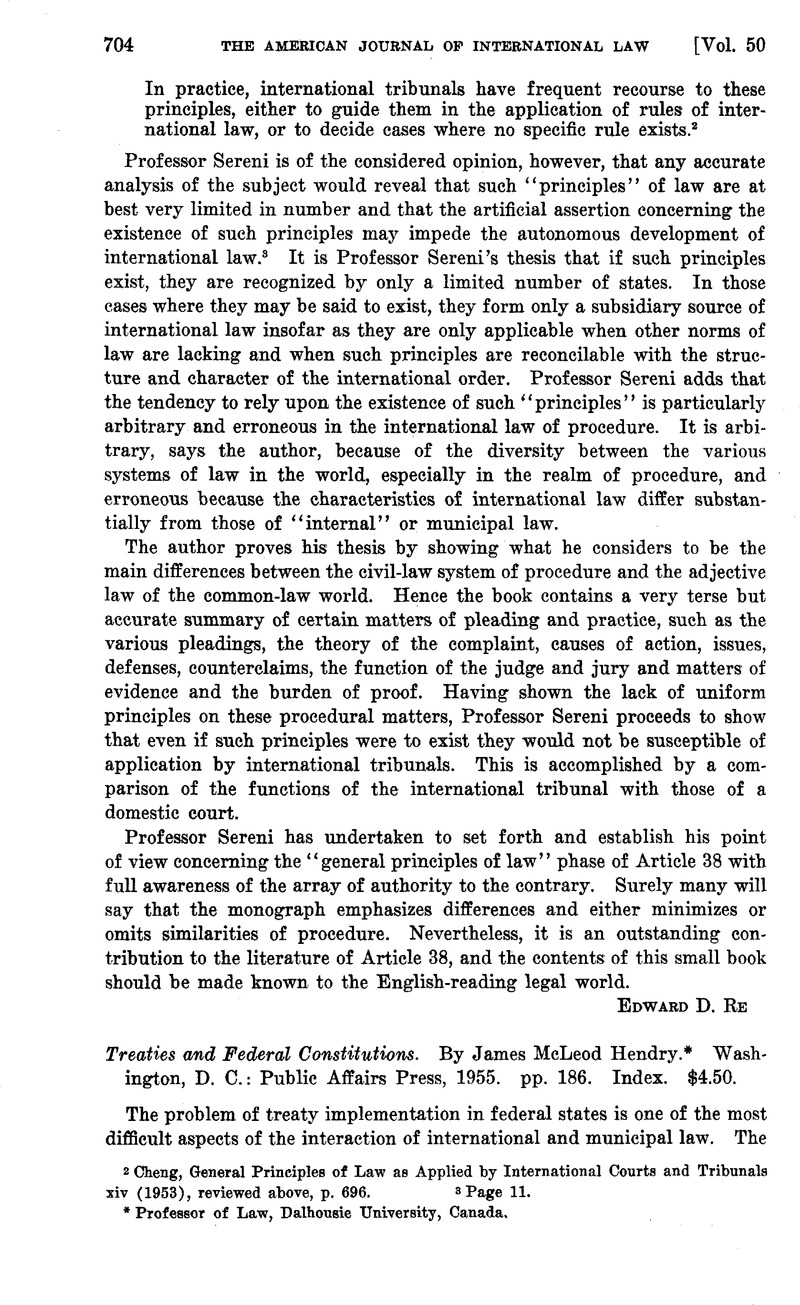Article contents
Treaties and Federal Constitutions. By James McLeod Hendry. Washington, D. C: Public Affairs Press, 1955. pp. 186. Index. $4.50.
Published online by Cambridge University Press: 28 March 2017
Abstract

- Type
- Book Reviews and Notes
- Information
- Copyright
- Copyright © American Society of International Law 1956
References
1 Virtually the only comparative study in English on the general problem is Ruth D. Masters’ International Law in National Courts (1932); but this is confined to the German, Swiss, French and Belgian courts and deals with customary international law as well as treaty law and with non-federal as well as federal problems.
2 One might wish that India had been included among the federations studied, even though the present Indian Constitution is only quasi-federal. In many ways the Indian experience is the most illuminating, because India has evolved through two constitutions, the first of which contained a Bricker-Amendment type provision and the second of which goes to the opposite extreme of giving the Federal Government plenary power to implement not only treaty obligations but non-obligatory recommendations of international organizations. India is the only federation with actual experience of a Bricker-type provision, and it is significant that in the drafting of the 1950 Constitution such provision was repudiated.
3 [1937] A.C. 326.
4 There are three volumes of these: (1) Treaties and Executive Agreements—Hearings Before a Subcommittee of the Committee on the Judiciary, U. S. Senate, 82nd Cong., 2nd Sess.; (2) Ibid. 83rd Cong., 1st Sess.; (3) Ibid. 84th Cong., 1st Sess.
5 Thus we are told on page 66 that in the United States and Switzerland “it is either provided in the constitution, or in accordance with constitutional practice that treaties constitutionally concluded become ipso facto the law of the land. Once treaties are validly concluded, they automatically have the same operation as a statute.” Not until page 91 is the distinction drawn between self-executing and non-self-executing treaties.
- 1
- Cited by




